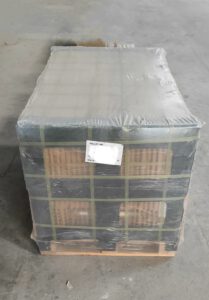As global supply chains evolve, savvy importers are shifting focus to Morbi, India—the world’s second-largest ceramic tile hub—as a cost-effective, high-quality alternative to traditional sourcing destinations like China. With 80% of India’s ceramic production and exports to 163 countries in 2024, Morbi is rapidly becoming a global benchmark for tiles. This guide unpacks why Morbi is a strategic choice for importers in 2025 and how to navigate its thriving industry.
Why Source Tiles from Morbi in 2025?
1. Unmatched Scale and Capacity
Morbi’s 1,000+ factories produce 4 million square meters of tiles daily, leveraging economies of scale to offer prices 30% lower than China (for standard PGVT formats like 60x60cm) while maintaining competitive quality. By 2025, India’s ceramic tile market is projected to grow at 8.94% CAGR, outpacing China’s 5% growth rate, positioning Morbi as a future leader.
Key Insight:
Recent challenges like capacity under-utilization have emerged due to oversupply. Experts view this as a short-term correction, not a long-term risk. However, the Morbi Ceramic Association passed a circular to increase the base price for all kinds of ceramic productions by 10% from 1st February 2025 to stabilize prices and inventory. Here is the link to the circular.
2. Cutting-Edge Technology & Innovation
Morbi’s manufacturers have mastered digital printing technology for hyper-realistic designs (marble, abstract, wood, geometric patterns) and large-format tiles (up to 1600x3200mm). The 2025 focus includes:
- Surface innovation: Textured finishes like “double digital” (embossing) and anti-slip surfaces.
- Energy-efficient kilns: Reducing production costs by 15–20% through upgraded machinery.
- Standardization: Enhancing quality consistency in popular PGVT formats (e.g., 60x120cm).
3. Sustainability as a Growing Focus
Over 85% of Morbi’s factories now use recycled water in production, cutting freshwater consumption by 40%. Eco-friendly practices include:
- Green packaging: Recyclable cardboard and biodegradable wraps.
- Waste reduction: Tile scraps repurposed for road construction.
- Certifications: Over 200 factories hold IGBC Green Pro or ISO 14001 certifications.
4. Logistics and Export Efficiency
Morbi’s proximity to Mundra Port—India’s largest port—ensures 15–20% lower export costs compared to Chinese hubs. Key advantages:
- Faster transit: 18 days to Europe vs. 25+ days from China.
- Customs support: Freight forwarders in Mundra specialize in tile exports.
Morbi vs. China: A 2025 Supplier Comparison
| Factor | Morbi, India | China |
| Pricing | ✅ 30% lower for PGVT formats | ❌ Rising labor/energy costs |
| Customization | ✅ Rapid adaptation to regional trends | ❌ Limited flexibility for small orders |
| Sustainability | ✅ 85% factories use recycled water | ❌ Lagging in green practices |
| Geopolitical Stability | ✅ Vibrant Gujarat Summit incentives (2024) | ❌ Trade tensions with EU/US |
| Export Diversity | ✅ Ships to 180+ countries duty-free | ❌ Anti-dumping duties in EU markets |
Steps to Import Tiles from Morbi

1. Identify Reliable Suppliers
- Certifications: Prioritize ISO, CE, UKCA, or Green Pro-certified factories.
- Ethical audits: Look for suppliers with SMETA reports for labor compliance.
- Factory visits: Attend the Ceramic & Bath Expo 2025 (June, Mumbai) to meet top players. See other popular tile exhibitions here.
2. Negotiate Pricing & MOQs
- MOQs: Start at 500–1,000 sq.m., with bulk discounts for 10,000+ sq.m. orders.
- Pricing: Porcelain tiles from $3–4/sq.m. (60x60cm PGVT).
- Mix orders: Combine 3–4 designs per container to reduce inventory risks.
3. Manage Logistics
- Packaging: Use reinforced wooden pallets with plastic edge guards. See the photo.
- Shipping: Partner with Mundra-based forwarders for better sea freights.
- Insurance: Opt for marine insurance covering breakage (0.5–1% of shipment value).
Challenges & Pro Tips
| Challenge | Solution | Pro Tip |
| Ghosting suppliers | Call directly if WhatsApp replies stall | Use local agents for follow-ups |
| Quality inconsistencies | Stick to trusted suppliers; avoid price-chasing | Request batch testing reports |
| Long lead times | Plan orders 3–6 months ahead | Book during non-peak seasons |
| Hidden credit costs | Compare cash vs. credit terms | A 3-month credit adds 7–10% markup |
Future Outlook: What’s Next for Morbi?
- Export targets: Aiming for $5 billion by 2027, leveraging EU’s anti-China tariffs.
- Youth-driven innovation: 70% of factory managers are under 40, driving tech adoption.
Conclusion: Morbi is Redefining Global Tile Sourcing
Morbi blends cost efficiency, custom designs, and quality consistency in ways few hubs can match. With Gujarat’s ceramics sector contributing ₹50,000 crore ($6B) annually, the region is poised to overtake China as the world’s top tile exporter by 2030.
Ready to Start?
- Shortlist suppliers: Use the unbiased factory directory.
- Order samples: Test quality with low-volume trial shipments.
- Leverage partnerships: Collaborate with logistics experts to streamline imports.
“Morbi isn’t just a manufacturing hub—it’s a global partner reshaping the future of tiles.”
– Mukesh Kundaria, President, Morbi Ceramic Association
Disclaimer: This blog post is for informational purposes only. We are not affiliated with, endorsed by, or connected to any trade names, organizations, or companies mentioned herein, including but not limited to Simpolo, Granicer, Icon, or Allcargo Logistics.